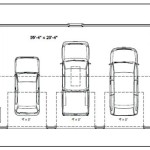The Importance of Grease for Garage Door Rails
Garage doors, essential components of modern residential and commercial properties, rely on a network of moving parts to function smoothly and reliably. Among these components, the rails, also known as tracks, serve as the guiding pathway for the door as it opens and closes. The rails are crucial for the proper alignment and movement of the rollers, which in turn support the weight of the door. Without proper lubrication, the rails can experience friction, leading to a host of problems that can compromise the door's performance and lifespan.
Applying grease to garage door rails is a preventative maintenance measure that ensures optimal operation and prevents costly repairs. The type of grease used, the application method, and the frequency of application all contribute to the effectiveness of this practice. Neglecting to grease the rails can result in increased noise, jerky movement, premature wear, and even complete failure of the garage door system. Therefore, understanding the importance of greasing garage door rails and implementing a regular maintenance schedule is vital for homeowners and property managers.
Understanding the Role of Grease in Garage Door Operation
Grease acts as a lubricant, reducing friction between moving surfaces. In the context of garage doors, grease applied to the rails minimizes friction between the rollers and the track. This reduction in friction translates to several key benefits. First, it allows the door to move smoothly and quietly. The absence of lubrication can cause the rollers to grind against the rails, producing unwanted noise and a jerky, uneven movement. This noise pollution can be disruptive, especially in homes with living spaces adjacent to the garage.
Second, adequate lubrication reduces wear and tear on the rollers and the rails themselves. The constant friction between unlubricated surfaces accelerates the degradation of these components. Rollers can become flattened or develop flat spots, while the rails can become scored or corroded. These types of damage necessitate premature replacement of parts, leading to unnecessary expenses. Applying grease regularly protects these components from the damaging effects of friction, extending their lifespan and ensuring long-term reliability.
Third, proper lubrication reduces the strain on the garage door opener motor. The motor is responsible for lifting and lowering the heavy door. When the rails and rollers are properly lubricated, the motor encounters less resistance and therefore expends less energy. This reduced strain not only prolongs the life of the motor but also improves its efficiency, potentially resulting in lower energy bills. A well-lubricated garage door system operates more effortlessly, benefiting all its components in the long run.
Finally, the application of grease can help to prevent rust and corrosion. Many greases contain additives that offer a protective barrier against moisture and other corrosive elements. This is particularly important in areas with high humidity or exposure to road salt, which can accelerate the corrosion process. By creating a protective layer on the rails, grease helps to maintain their structural integrity and prevent degradation that could lead to failure.
Choosing the Right Grease for Garage Door Rails
The selection of the appropriate type of grease is critical to the success of this maintenance procedure. Not all greases are created equal, and using the wrong type can be detrimental. Generally, a lithium-based grease is recommended for garage door rails. Lithium grease is known for its versatility, excellent water resistance, and ability to withstand a wide range of temperatures. These properties make it well-suited for the demanding conditions that garage door systems encounter.
Avoid using household lubricants like WD-40 as a primary lubricant. While WD-40 is effective for loosening rusted parts, it is not a long-lasting lubricant. It tends to evaporate quickly, leaving the surfaces unprotected and potentially attracting dirt and debris. Silicone-based lubricants are also not ideal for garage door rails. While they are effective for some applications, they may not provide adequate lubrication for the heavy loads and constant movement associated with garage doors.
Specialty garage door lubricants are available and often contain specific additives designed to optimize performance and protect against corrosion. These products are formulated to withstand the unique stresses and environmental factors affecting garage door systems. When selecting a grease, consider factors such as temperature range, water resistance, and load-bearing capacity. Some greases are specifically designed for extreme temperatures, while others offer enhanced protection against corrosion or water washout.
It is also important to consider the consistency of the grease. A grease that is too thin may not provide adequate lubrication, while a grease that is too thick may be difficult to apply and could attract dirt and debris. A medium-consistency lithium-based grease is generally a safe and effective choice for garage door rails. Always consult the manufacturer's recommendations for the specific type of garage door opener and track system to ensure compatibility and optimal performance.
Proper Application Techniques for Garage Door Rail Grease
The application of grease to garage door rails requires a systematic approach to ensure that all critical areas are adequately lubricated. Before applying any grease, it is essential to clean the rails. Use a clean cloth or brush to remove any existing dirt, dust, or old grease. This will allow the new grease to adhere properly and provide effective lubrication. A buildup of dirt and debris can actually exacerbate friction and negate the benefits of lubrication.
Apply the grease sparingly and evenly along the entire length of the rails. Avoid applying excessive amounts of grease, as this can attract dirt and create a sticky mess. A thin, consistent layer of grease is sufficient to provide adequate lubrication. Use a brush or a clean cloth to spread the grease evenly along the rails. Pay particular attention to areas where the rollers make contact with the rails. These areas experience the most friction and require the most thorough lubrication.
Focus on lubricating the rollers themselves. Many rollers have bearings that require lubrication. If the rollers are accessible, apply a small amount of grease directly to the bearings. If the rollers are sealed, apply grease to the point where the roller meets the rail. This will allow the grease to be distributed as the door moves. Over time the rollers will distribute the grease along the rails and bearings that will allow for a smoother transition.
After applying the grease, operate the garage door several times to distribute the lubricant evenly along the rails and rollers. Observe the door's movement and listen for any unusual noises. If the door still exhibits jerky movement or makes unusual noises, reapply grease to the affected areas. It may take several applications to achieve optimal lubrication, especially if the rails have been neglected for a long period. Establish a regular maintenance schedule to ensure that the rails are consistently lubricated. A frequency of once or twice a year is generally recommended, but this may vary depending on the frequency of use and environmental conditions. Regular lubrication will prevent problems before they arise, ensuring the long-term reliability and smooth operation of the garage door system.

3 In One 11 Oz Garage Door Lube With Smart Straw Spray 100584

3 In One 11 Oz Garage Door Lube With Smart Straw Spray 100584

How To Lubricate A Garage Door Best Lubricants

How To Lubricate Your Garage Door Sterling Llc Macomb Mi

3 In One 11 Oz Garage Door Lube With Smart Straw Spray 100584

Blaster 9 3 Oz Premium Silicone Garage Door Lubricant Spray 16 Gdl The Home

3 In One 11 Oz Garage Door Lube With Smart Straw Spray 100584

Crc Roll Up Door Lubricant 11 Oz Industries

How To Lubricate A Garage Door 10 Steps With S Wikihow

Garage Door Lubricant B Laster Products
See Also








